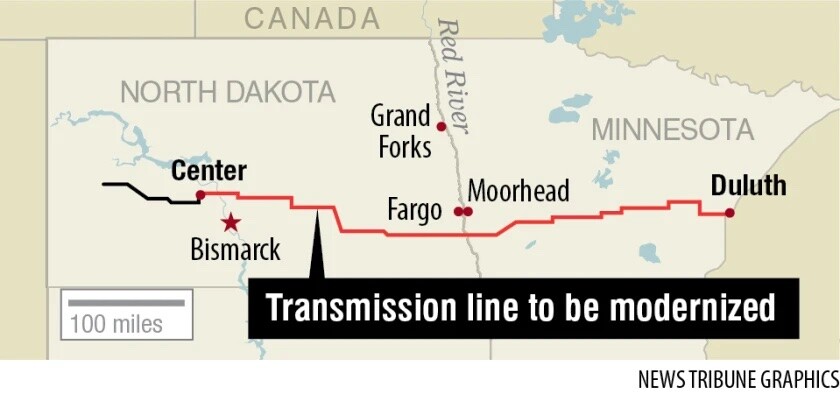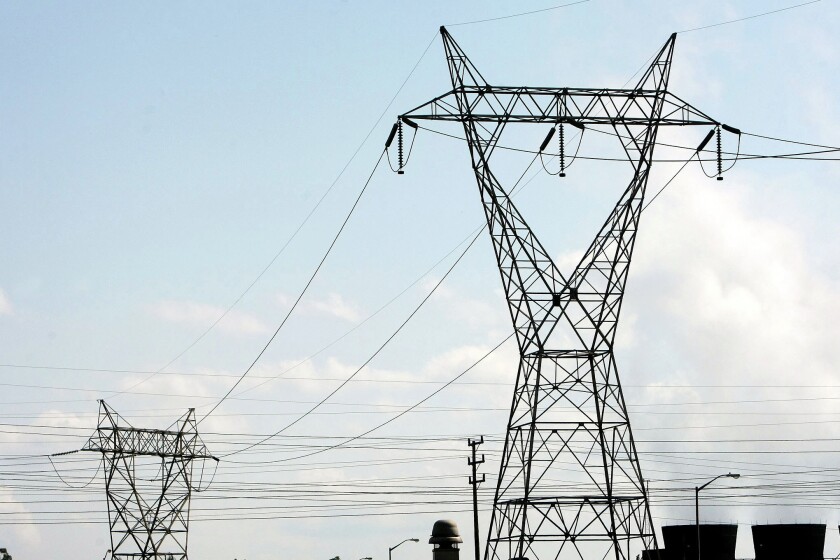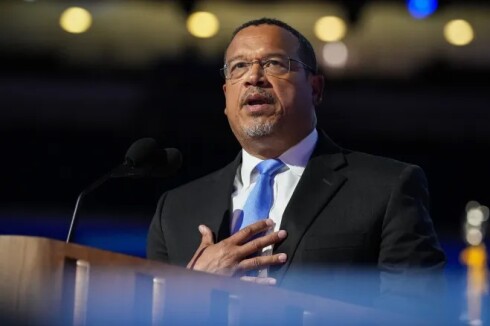ST. PAUL — State regulators approved key permits for Minnesota Power's planned upgrade of a transmission line between North Dakota and Hermantown.
The Minnesota Public Utilities Commission on Thursday granted a certificate of need and route permit to the Duluth-based utility company’s planned modernization of an existing 465-mile, high-voltage direct current, or HVDC, line.
ADVERTISEMENT
Minnesota Power said construction on the project, which may cost up to $940 million, could begin this year. The upgrades will be in service between 2028 and 2030, more than 50 years after the transmission line was built in 1977. Minnesota Power acquired it in 2009 to carry more than 500 megawatts of wind energy.

The new project will expand capacity to 900 megawatts with the ability to add more capacity in the future. The system will also move energy to flow in either direction as needed, Minnesota Power said.
When granting a certificate of need, the PUC considers, among other factors, whether the project helps meet the region’s energy needs. The transmission line’s route will remain the same, with most upgrades — HVDC converter stations and interconnection facilities — located at the Square Butte East Substation in Center, North Dakota, and the Arrowhead Substation in Hermantown on each end of the line.
While HVDC can more efficiently transmit electricity over long distances than alternating current, it must be converted to AC before flowing onto the existing grid.
Less than a mile of new transmission line will be added at each substation, Minnesota Power said.
Josh Skelton, Minnesota Power’s chief operating officer, said in a news release the modernization would help support the company’s transition to clean energy. More than half of Minnesota Power’s energy comes from renewable sources, and a law passed last year requires 100% of the state’s energy to come from carbon-free sources by 2040.
“Grid reliability and resiliency are critical as we continue to add more carbon-free energy to our energy supply and we experience more extreme weather,” Skelton said. “This investment to strengthen transmission and replace aging infrastructure is another integral step in our EnergyForward strategy for a carbon-free future.”
ADVERTISEMENT
According to the U.S. Department of Energy’s October 2023 National Transmission Needs Study, the country’s existing transmission infrastructure is aging and needs to be upgraded to avoid congestion.
“Today’s grid cannot adequately support 21st-century challenges — including the integration of new clean energy sources and growing transportation and building electrification — while remaining resilient in the face of extreme weather exacerbated by climate change,” the Department of Energy said in a summary of key findings.
The project did face pushback from Minnesota Power’s large industrial customers — like taconite and paper plants — who had argued it would be too costly and that the company should have coordinated with more transmission and utility owners on the regional grid.
“As it is proposed, Minnesota Power stands to benefit greatly from this project’s sizeable addition to rate base even though its customers will bear all of the costs, for a project Minnesota Power repeatedly has touted as benefiting the region and the stability of the grid in the Midwest,” the coalition of industrial customers said. “Quite simply, Minnesota Power should not ‘go it alone’ for a project of this size.”
The Department of Energy awarded the project a $50 million grant from the Bipartisan Infrastructure Law last year.
The project also received $15 million in state funding last year as part of the Minnesota Legislature’s energy and climate budget bill, the company said. It sought that state money, in part, to help unlock the federal grant.
Editor's note: This story was updated at 7:25 p.m., Thursday, Aug. 1 to correct the project's cost in the headline. It was originally published at 6:30 p.m., Thursday, Aug. 1. The News Tribune regrets the error.














